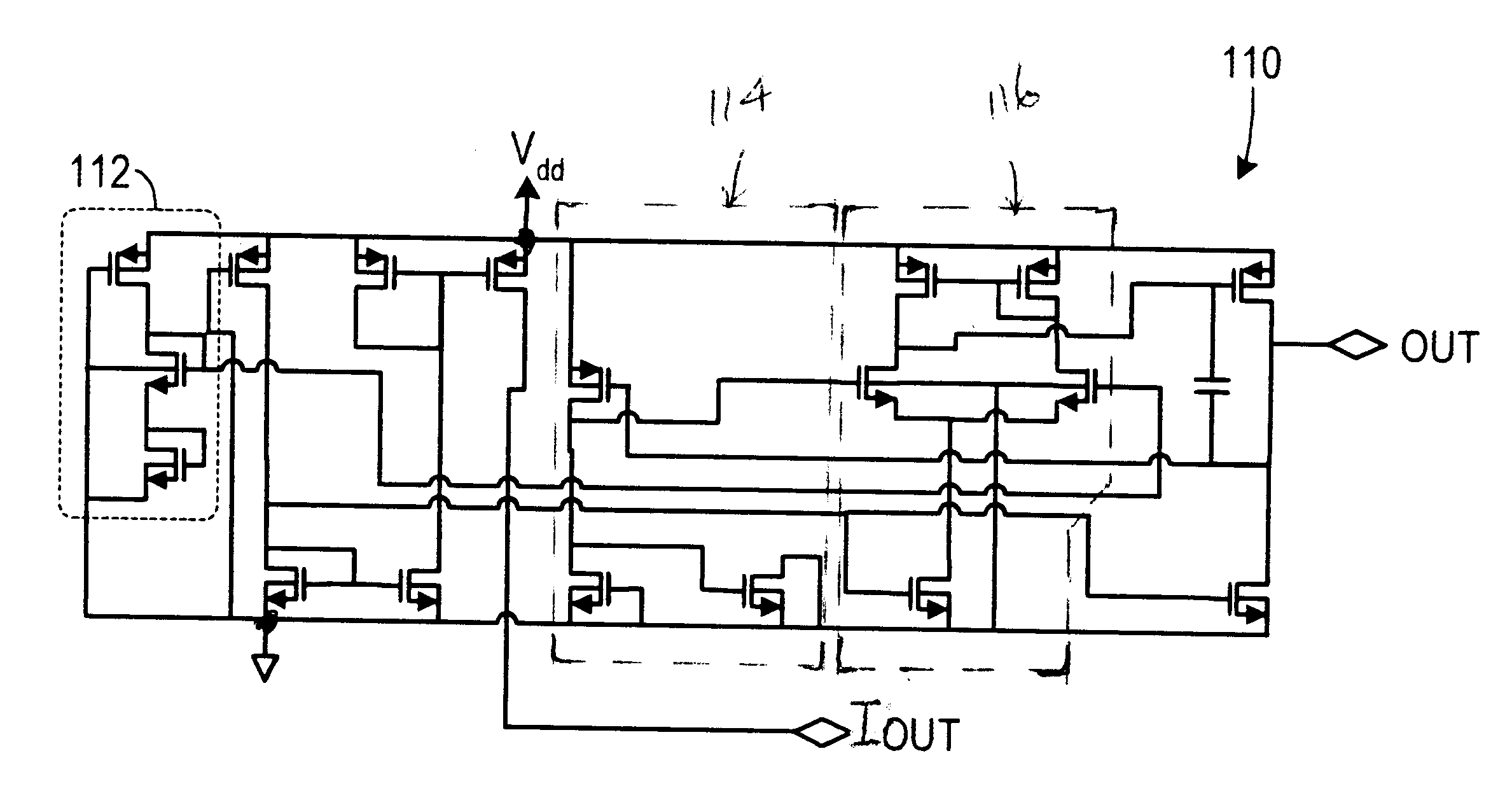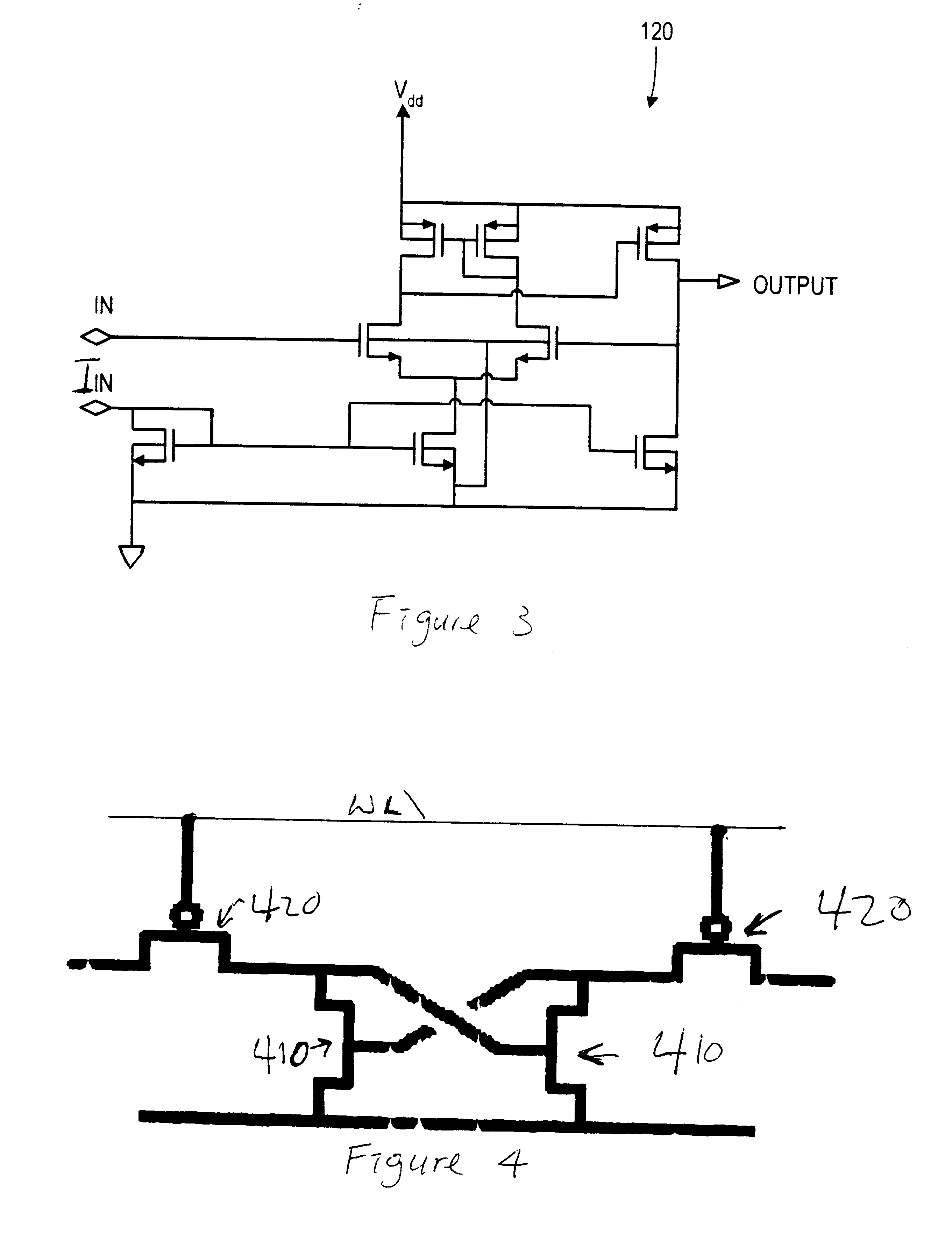Bias cell for four transistor (4T) SRAM operation
a bias cell and transistor technology, applied in information storage, static storage, digital storage, etc., can solve the problems of excessive leakage of cells, data retention will be jeopardized, and excessive power consumption, and achieve the effect of reducing power consumption
- Summary
- Abstract
- Description
- Claims
- Application Information
AI Technical Summary
Benefits of technology
Problems solved by technology
Method used
Image
Examples
Embodiment Construction
The numerous innovative teachings of the present application will be described with particular reference to the presently preferred embodiment. However, it should be understood that this class of embodiments provides only a few examples of the many advantageous uses of the innovative teachings herein. In general, statements made in the specification of the present application do not necessarily delimit any of the various claimed inventions. Moreover, some statements may apply to some inventive features but not to others.
FIG. 1 is a block diagram overview of a sample implementation. (The reference block, shown in more detail in FIG. 2, and driver section, shown in more detail in FIG. 3, complete the circuit design.) As FIG. 1 shows, there are two basic modules in this implementation of the SRAM driver cell. A reference module 110 derives a supply current and an output voltage for the driver module 120. The driver module 120, in the presently preferred embodiment, is a unity gain buff...
PUM
 Login to View More
Login to View More Abstract
Description
Claims
Application Information
 Login to View More
Login to View More - R&D
- Intellectual Property
- Life Sciences
- Materials
- Tech Scout
- Unparalleled Data Quality
- Higher Quality Content
- 60% Fewer Hallucinations
Browse by: Latest US Patents, China's latest patents, Technical Efficacy Thesaurus, Application Domain, Technology Topic, Popular Technical Reports.
© 2025 PatSnap. All rights reserved.Legal|Privacy policy|Modern Slavery Act Transparency Statement|Sitemap|About US| Contact US: help@patsnap.com



